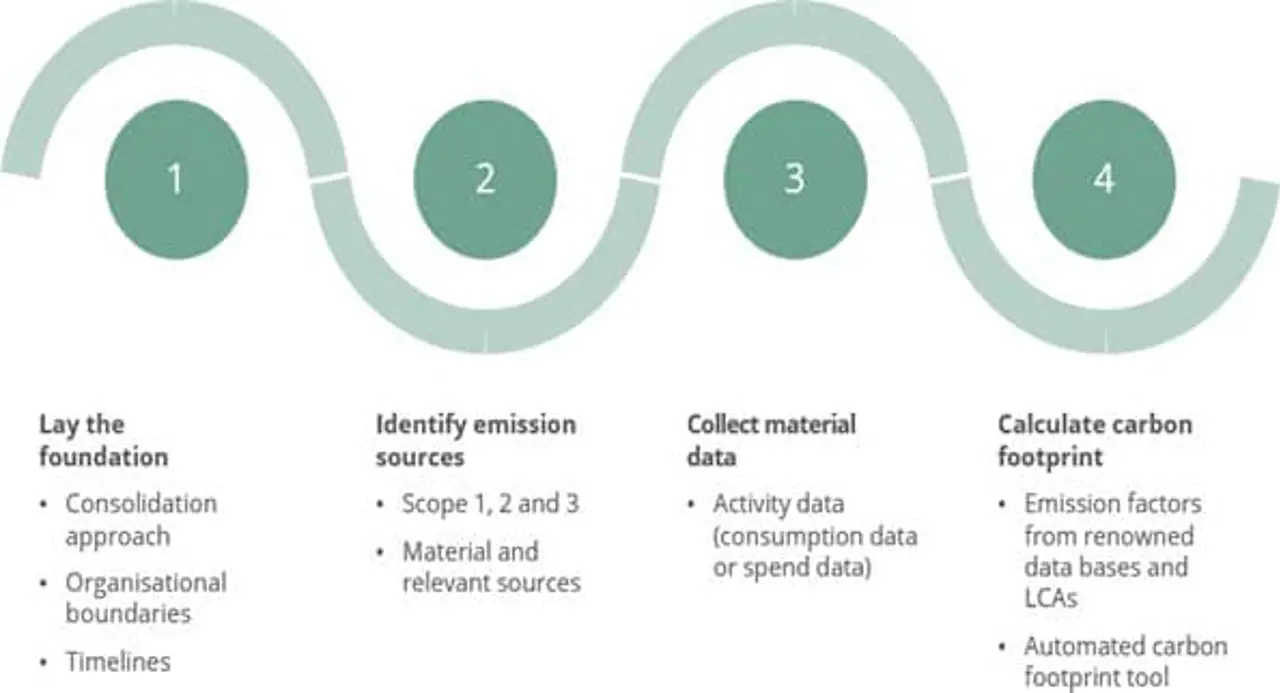Measuring a company’s carbon footprint, a crucial metric for evaluating climate impact, involves accounting for all direct and indirect emissions from the firm’s activities. Accurate reporting, following the Greenhouse Gas Protocol, helps set effective targets and understand emission sources. This blog outlines a four-step process for consistent carbon reporting at the company level (see Figure 1). Holtara’s Carbon and Climate Service offers knowledge and tools to simplify this process, assisting in setting meaningful reduction targets and identifying decarbonisation pathways.
A short guide to carbon footprint reporting – Scope 1, 2, and 3
22 April 2024
Simone van den Akker, Senior Consultant
The significance of reporting greenhouse gas (“GHG”) emissions for companies has significantly risen, driven by regulatory mandates aligned with the objectives of the Paris Agreement and the escalating demands of stakeholders.

Step 1: Lay the foundation
The GHG Protocol is the leading international framework for accounting emissions, outlining three emission scopes (Scope 1, Scope 2, and Scope 3). While reporting on Scope 1 and Scope 2 emissions has become widespread, inclusion of Scope 3 emissions reporting is gaining traction, driven by regulatory frameworks like the Corporate Sustainability Reporting Directive (“CSRD”) and Sustainable Finance Disclosure Regulation (“SFDR”). Effective reporting involves choosing a consolidation approach, defining company and operational boundaries, and setting base and reporting years. The consolidation approach ensures consistent accounting across different legal and business setups. Regarding time boundaries, the reporting year must be identified and ideally aligned with relevant financial reporting timelines. Furthermore, citing the base year is essential, as it determines relevant reduction targets and is needed for performance tracking.
Step 2: Identify emission sources
Grouping emissions within scopes 1, 2, and 3 involves careful consideration. Scope 1 and 2 emissions arise from a company’s own operations, whereas scope 3 emissions originate from the value chain. The GHG Protocol divides scope 3 emissions into 15 categories. A screening process is essential to rank impactful emission sources, streamlining data collection within the 15 scope 3 categories. Some categories can be excluded based on their materiality and relevance, determined by factors such as the size of the emission source.
Step 3: Collect material data
After identifying key emission sources, it is essential to obtain relevant data. Activity-based data, like fuel usage and electricity consumption, is preferred over spend-based data for accuracy. While scope 1 and 2 emissions can be collected from utility invoices and maintenance records, scope 3 data collection is more complex. Activity data sourced from suppliers is preferred, but internal consumption data can also be used. For example, companies can gather purchasing data from the bill of materials and extract product energy usage information from product specifications. In cases where consumption data is unavailable, companies may resort to estimations, such as estimating emissions related to employee commuting based on average distances travelled and common transportation modes within their industry.
Steps 4: Calculate the carbon footprint
Calculations of emissions depend on emission factors, which denote emissions per unit of activity-based or spend-based data and are ideally obtained from authoritative databases such as DEFRA and the EPA. For scope 3 sources, emission factors can also be extracted from Life Cycle Assessments (“LCAs”). GHG emissions are often reported in tonnes of carbon dioxide equivalent (tCO2e) to compare their climate impact. This accounts for the global warming potential of each gas relative to CO2 over a 100-year period. Consolidated emissions are calculated by multiplying the underlying data by the relevant emission factors.
Conclusion
Reliable GHG emissions accounting is crucial for companies to address climate impact effectively. This guide provides a step-by-step roadmap, highlighting key considerations. Holtara’s Carbon and Climate Service supports companies in their decarbonisation efforts, from understanding emission sources to setting reduction targets.
Please reach out to us for additional information on how our practice can assist you in carbon footprint reporting and reduction.





